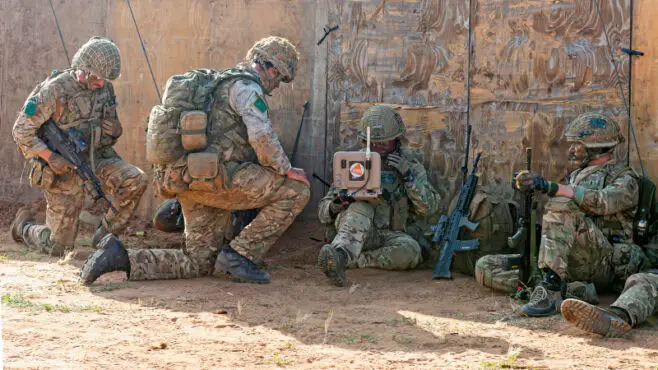
“Data is our ammunition,” said Major General Jonathan Cole, CIO and director of information at the British Army, speaking at New Statesman Media Group‘s CIO Town Hall Live forum in July 2020.
With its innovations in data, cyber and its “IoT in the battlefield” initiatives, the British Army is recognised as a cyber and data pacesetter in Tech Monitor‘s inaugural Technology Leaders Index.

Maj Gen Cole is a member of the Army Board who leads on information strategy, capability and services in all aspects of the Army’s activities, including command support, intelligence, surveillance, target acquisition, reconnaissance and security. At the CIO Town Hall Live event, Maj Gen Cole shared the British Army’s broad transformation initiatives and technology strategy including the development of future capabilities, modernising cyber and electromagnetic activity, and in particular the better exploitation of data to give the military an ‘Information Advantage’ over its adversaries.
‘Information Manoeuvre’
“The Information Advantage is an aim of where we are seeking to get to,” Maj Gen Cole said. “There’s a recognition that in the Information Age there is also an adversarial situation where militaries seek to have advantage over their competitors, or if things escalate then ultimately their adversaries – and to be able to compete with them for control.
“It’s about being able to dominate the information environment, but of course it’s impossible to dominate. We seek to have a state of advantage over others with information and data in particular.”
Describing the ‘Information Manoeuvre’ with “data our new ammunition”, Maj Gen Cole said that the British Army was seeking to “dominate the ability to exploit data for your own purposes and to be able to do so faster than the adversary”.
Project Hydra is the name of the data analytics tool the British Army technology specialists built, alongside the US Army, for effective use in a military battlefield scenario to fuse intelligence data sets.
In September 2020, the US Army’s Cyber Command announced it would be following the British Army’s Information Advantage ambitions as it favoured a strategy of “decision dominance” over a “warfare-focused approach”.
‘IoT in the battlefield’
CIO Maj Gen Cole is also leading the British Army’s ISTAR programme, which he described as “an internet of things in the battlefield”, and the LE TacCIS Programme – delivering the next generation of tactical military communication in the land environment. A battle management programme modernising the network infrastructure and the applications used by individual soldiers via a tablet attached to their body armour providing them with a local picture of their environment, LE TacCIS is described by the Ministry of Defence as “a disruptive programme focused on delivery of improved capabilities to the Warfighter”.
As well as being recognised as a data pacesetter in the Technology Leaders Index, the British Army is also acknowledged as a cyber innovator.
Alongside developing its capacity to survey, deliver and withstand electronic attacks, which Maj Gen Cole outlined at New Statesman Media Group‘s CIO Town Hall Live event, the British Army has also resurrected 13 Signals Regiment. What was a specialist wireless group in the Second World War, it is being recreated for the modern day as a unit of deployable cyber protection teams, and something Maj Gen Cole described as “an exciting part of our cyber programme”.






